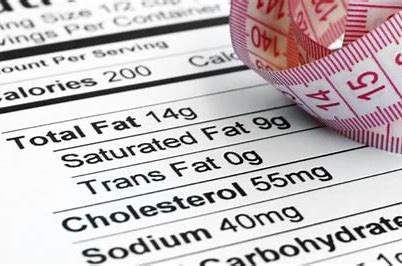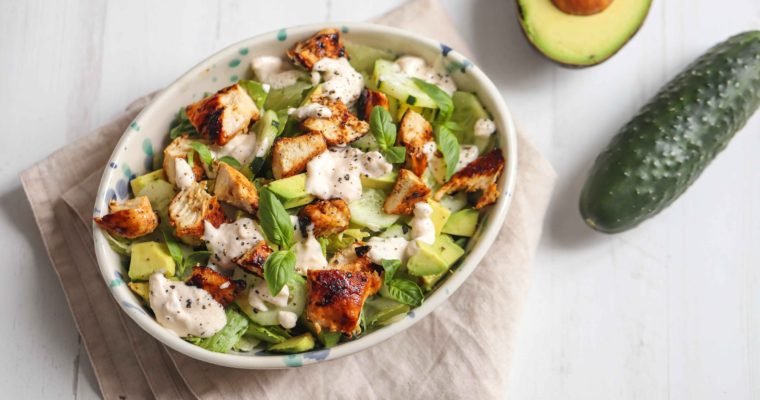Nutrition labels can help you choose between products and keep a check on the amount of foods you’re eating that are high in fat, salt and added sugars. Most pre-packed foods have a nutrition label on the back or side of the packaging. These labels include information on energy in kilojoules (kJ) and kilocalories (kcal), usually referred to as calories.
They also include information on fat, saturates (saturated fat), carbohydrate, sugars, protein and salt. All nutrition information is provided per 100 grams and sometimes per portion of the food. Supermarkets and food manufacturers now highlight the energy, fat, saturated fat, sugars and salt content on the front of the packaging, alongside the reference intake for each of these. You can use nutrition labels to help you choose a more balanced diet.
For a balanced diet: eat at least 5 portions of a variety of fruit and vegetables every day base meals on potatoes, bread, rice, pasta or other starchy carbohydrates – choose wholegrain or higher fibre where possible have some dairy or dairy alternatives, such as soya drinks and yoghurts – choose lower-fat and lower-sugar options eat some beans, pulses, fish, eggs, meat and other protein – aim for 2 portions of fish every week, 1 of which should be oily, such as salmon or mackerel choose unsaturated oils and spreads, and eat them in small amounts, drink plenty of fluids – the government recommends 6 to 8 cups or glasses a day. If you’re having foods and drinks that are high in fat, salt and sugar, have these less often and in small amounts.
Try to choose a variety of different foods from the 4 main food groups. Most people in the UK eat and drink too many calories, too much fat, sugar and salt, and not enough fruit, vegetables, oily fish or fibre. Nutrition labels are often displayed as a panel or grid on the back or side of packaging.
This type of label includes information on energy (kJ/kcal), fat, saturates (saturated fat), carbohydrate, sugars, protein and salt. It may also provide additional information on certain nutrients, such as fibre. All nutrition information is provided per 100 grams and sometimes per portion.
How do I know if a food is high in fat, saturated fat, sugar or salt?
There are guidelines to tell you if a food is high in fat, saturated fat, salt, sugar or not.
These are:
Total fat
High: more than 17.5g of fat per 100g
Low: 3g of fat or less per 100g
Saturated fat
High: more than 5g of saturated fat per 100g
Low: 1.5g of saturated fat or less per 100g
Sugars
High: more than 22.5g of total sugars per 100g
Low: 5g of total sugars or less per 100g
Salt
High: more than 1.5g of salt per 100g (or 0.6g sodium)
Low: 0.3g of salt or less per 100g (or 0.1g sodium)
For example, if you’re trying to cut down on saturated fat, eat fewer foods that have more than 5g of saturated fat per 100g. Some nutrition labels on the back or side of packaging also provide information about reference intakes.
Nutrition labels on the front of packaging
Most of the big supermarkets and many food manufacturers also display nutritional information on the front of pre-packed food. This is very useful when you want to compare different food products at a glance. Front-of-pack labels usually give a quick guide to: energy, fat content, saturated fat content, sugars content, salt content. These labels provide information on the number of grams of fat, saturated fat, sugars and salt, and the amount of energy (in kJ and kcal) in a serving or portion of the food.
Reference intakes
Nutrition labels can also provide information on how a particular food or drink product fits into your daily recommended diet. Reference intakes are guidelines about the approximate amount of particular nutrients and energy required for a healthy diet. Some front-of-pack nutrition labels use red, amber and green colour coding. Colour-coded nutritional information tells you at a glance if the food has high, medium or low amounts of fat, saturated fat, sugars and salt:
red means high
amber means medium
green means low
In short, the more green on the label, the healthier the choice. If you buy a food that has all or mostly green on the label, you know straight away that it’s a healthier choice. Amber means neither high nor low, so you can eat foods with all or mostly amber on the label most of the time. But any red on the label means the food is high in fat, saturated fat, salt or sugars, and these are the foods we should cut down on. Try to eat these foods less often and in small amounts.
Ingredients list
Most pre-packed food products also have a list of ingredients on the packaging or an attached label. The ingredients list can also help you work out how healthy the product is. Ingredients are listed in order of weight, so the main ingredients in the packaged food always come first. That means that if the first few ingredients are high-fat ingredients, such as cream, butter or oil, then the food in question is a high-fat food.





